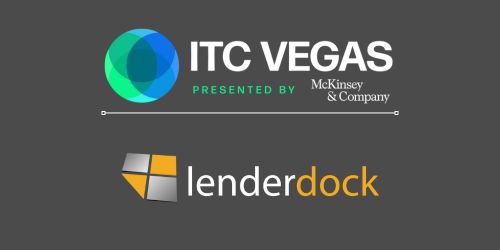Understanding the role of a Managing General Agent
Without having to incur the usual costs of expansion, MGAs can provide insurers with an affordable way to enter new or niche markets.
What is a managing general agent? This piece will focus on giving a clear definition of managing general agents (MGAs) instead of going into detail about their uses, history, and growth.
The following list of factors determines whether a person or thing is an MGA:
1. Anyone or any group that manages all or part of an insurance company’s business, such as the restricted administration of an insurance company’s division, department, or underwriting office; and
2. Acts as an agent for that insurer by doing the three things below, either by themselves or with other companies; this is true no matter what the agent’s title is (e.g., “agent,” “MGA,” etc.) or whether the MGA is authorized by the insurer to do these things.
A. Writes gross direct premiums equal to or greater than 5% of the insurer’s policyholder surplus (as shown in the insurer’s most recent annual statement for any given quarter or year); or
B. Underwrites gross direct premiums equal to or greater than 5% of the insurer’s policyholder surplus (as shown in the insurer’s most recent annual statement) in any given quarter or year; or
C. Either
i. Changes or pays out claims worth more than $10,000 each; or
ii. Negotiates coverage on behalf of the insurer.
In general, look at MDL 225, which is the NAIC Managing General Agents Act.
In short, an MGA is a person who oversees how an insurer does business, writes some of the insurer’s business, settles or adjusts some of the insurer’s claims, and either works with the insurer to arrange reinsurance or brings in new business. Things aren’t always so simple, though.
Unique aspects of each state
All 50 states, the District of Columbia, and the Virgin Islands may have different rules and thresholds than the Model Act. This is because the above summary is based on the Managing General Agents Act (the Model Act) of the National Association of Insurance Commissioners (NAIC, id., § 2(D)).
Based on California law’s description of MGA, for example, it looks like a person or business can be considered an MGA just by negotiating reinsurance (Cal. Insurance Code §769.81(c)). On the other hand, Texas law has a very different—possibly more literal—definition of an MGA. It only looks at whether the person or organization can accept or process policies made and sold by other agents and whether they have control over an insurer’s local agency and field operations (see §19.1202(3) of the 28th Texas Administrative Code). Surprisingly, though, the New York rule sticks much more closely to the Model Act’s description of MGA, with no clear differences – check out N.Y. Comp. Codes R. & Regs. tit. 11, §33.2 – it lowers the amount of money that can be paid out for adjusting and changing claims from $25,000 to $10,000, which is what the Model Act said.
Exceptions. Obviously, the Model Act lets some people and groups off the hook from being seen as MGAs when they might otherwise be qualified for exemptions. To give you a quick rundown of these exceptions:
1. An employee of the insurance company,
2. A U.S. branch manager stationed in the U.S. of an overseas insurance company,
3. An associated underwriting manager who oversees all or part of the insurance company’s contractual activities and whose pay is not based on the number of written premiums; or
4. An attorney-in-fact for a reciprocal insurer or interinsurance exchange subscriber acting under power of attorney.
Because of the large amount of underwriting and production that would usually be too much for one person, many MGAs are businesses rather than people. Because of this, some states, like New York, have done away with the first clause and replaced it with the third one. As for the holding company act protection, it applies to all affiliates, no matter what services they provide to the insurance company (N.Y. Comp. Codes R. & Regs. tit. 11, §33.4(a)). This move gives captive agencies and the insurers that work with them a little more room to breathe. These companies do cost-effective underwriting and claims management in-house. It was likely partly caused by the huge rise in the number of hostage agencies that have been set up and used over the years.
License terms and responsibilities
What does it mean if you’ve proven that you meet the legal standards to be an MGA in at least one state? MGAs need to keep their licenses up to date in the state where the risk is located or where the insurance is based (NAIC Managing General Agents Act, MDL 225, §3).
Granting licenses
The rules for getting a license may also be different in each state. Most of the time, the MGA will need to keep another license in addition to its production license. It might even be necessary to have extra IDs for everyone who works for the MGA. Some states, like New York, don’t have a specific type of license. For example, an MGA’s producer license gives it a license. This means that the insurer is mostly responsible for any extra registration requirements, like making sure that the right MGA-specific appointments are set up and forms are filled out and sent in (see the OGC Opinion from December 18, 2002, and the Department of Financial Services’ Managing General Agent Appointment and Termination).
Responsibility
Becoming an MGA can mean taking on a lot of duties, such as more attention from regulators, binding contracts, and reporting obligations. These may be more important than any new license standards that might or might not need to be met.
As per the Model Act, “the MGA’s actions are taken to be those of the insurer for whom it is acting… an MGA may be examined as if it were the insurer,” (see NAIC Managing General Agents Act, MDL 225, §6. To be clear, that quote is all of Section 6 of the Model Act). It basically tells MGAs that officials will take their duties very seriously. As many who have helped producers through regulatory examinations at the insurer level can tell, these exams are not right for the average producer.
Also, the Model Act has a lot of complicated rules that must be written in every contract that controls the MGA’s services, even though it is the insurer, not the MGA, that is mostly responsible for reporting.
Key points
There are without a question many good reasons to become an MGA. For starters, MGAs can be a good option for insurers that want to get into a new or niche market because they don’t have to pay the normal fees. This means that any MGA that has the tools to let the insurer enter the market in question (for example, having previously approved goods) is in a very good position to make a lot of money.
Because of this, an agent who only brings in business would never want to be seen as an MGA unless they really do the things that a state’s MGA guidelines say they should do. This is why many people are told to get rid of the words “managing general agent” or “MGA” from their insurance policies. That word doesn’t seem to change the fact that someone or something is an MGA, so why even bring up the idea that you might be providing services that are only available to MGAs?
This increases danger and scrutiny from regulators for no reason, even if it’s small. For example, if a regulator looks at an agreement with the wrong title while looking at an insurer, the regulator may investigate the producer’s responsibilities and license status. Also, using the terms incorrectly could lead to confusion about the services covered by the insurance contract when there shouldn’t be any confusion at all.
You should think about this: “Do I underwrite insurance, adjust or pay claims, negotiate reinsurance, or even just manage elements of an unaffiliated insurer’s business?” If the answer is “yes,” you should look over the laws about handling general agents in each state where you have a producer license.











